


The Carafa Hours (use of Rome)
, Italy, Florence, c. 1490–1500






The Carafa Hours (use of Rome)
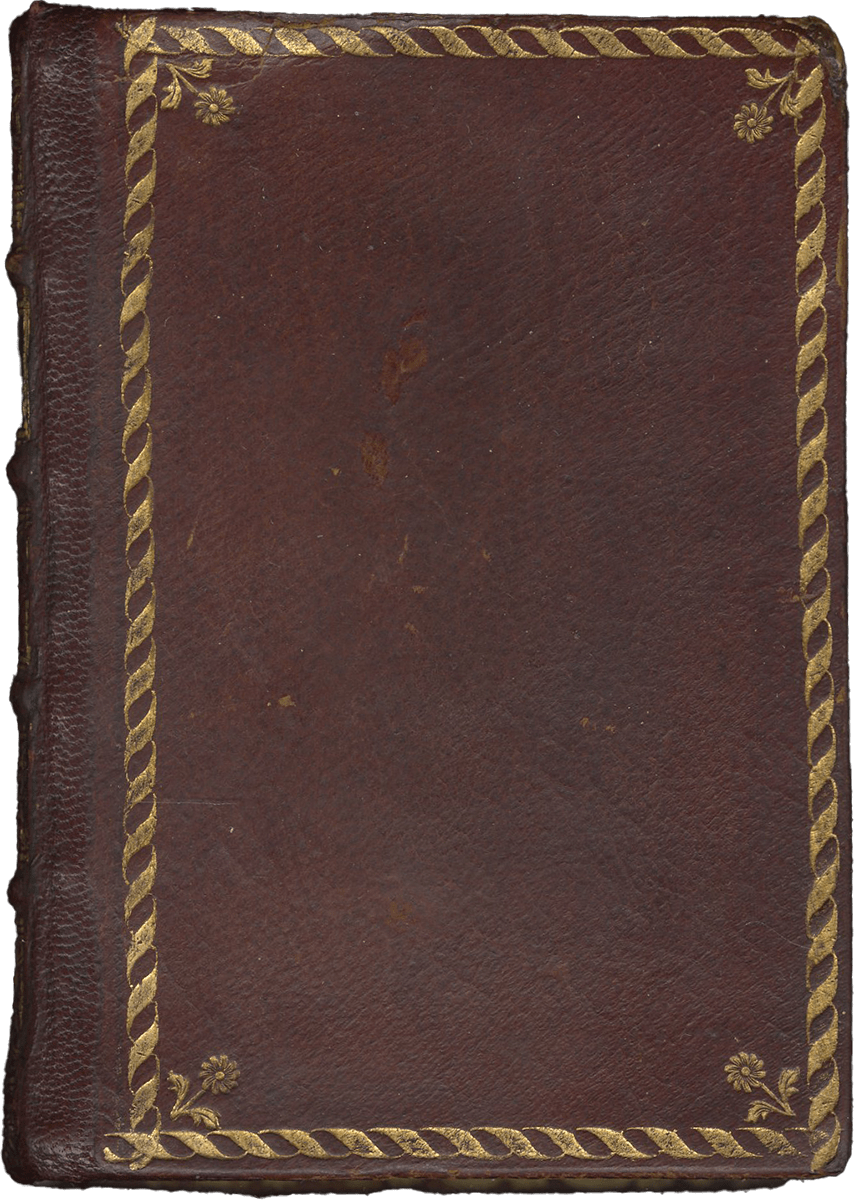
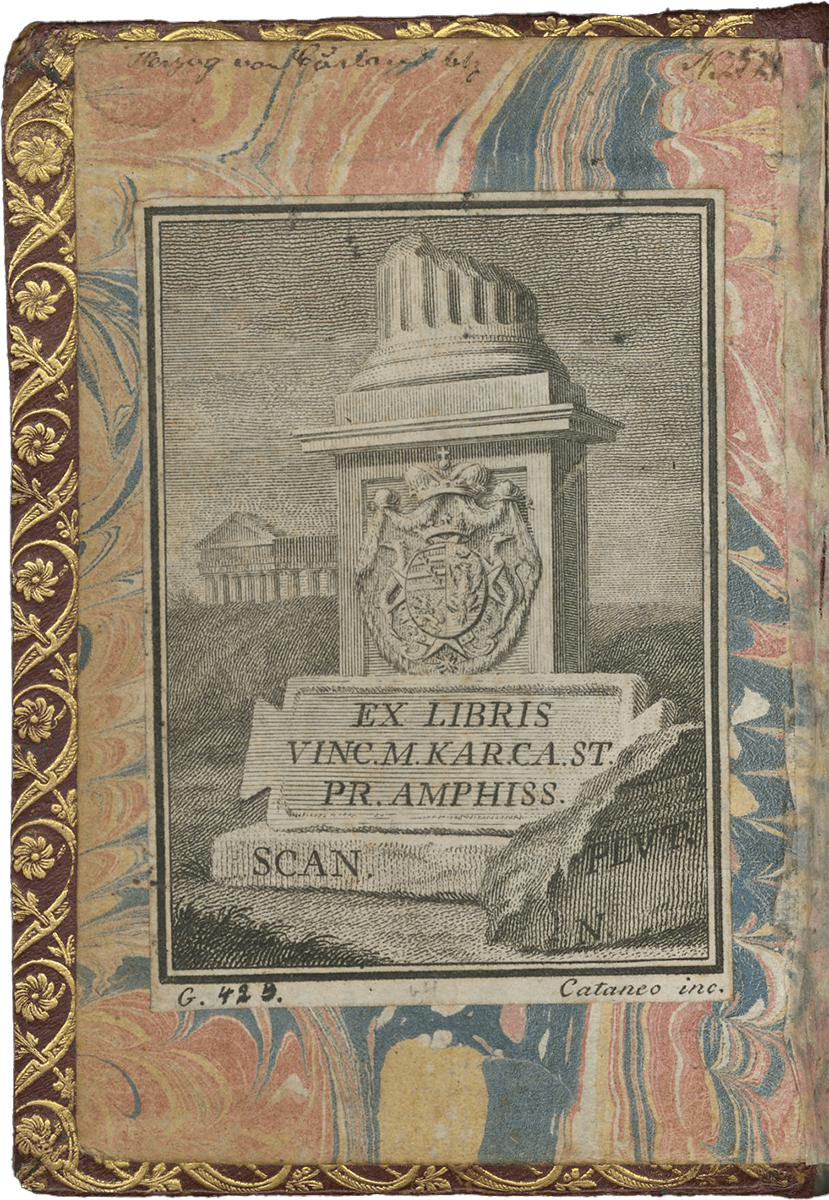
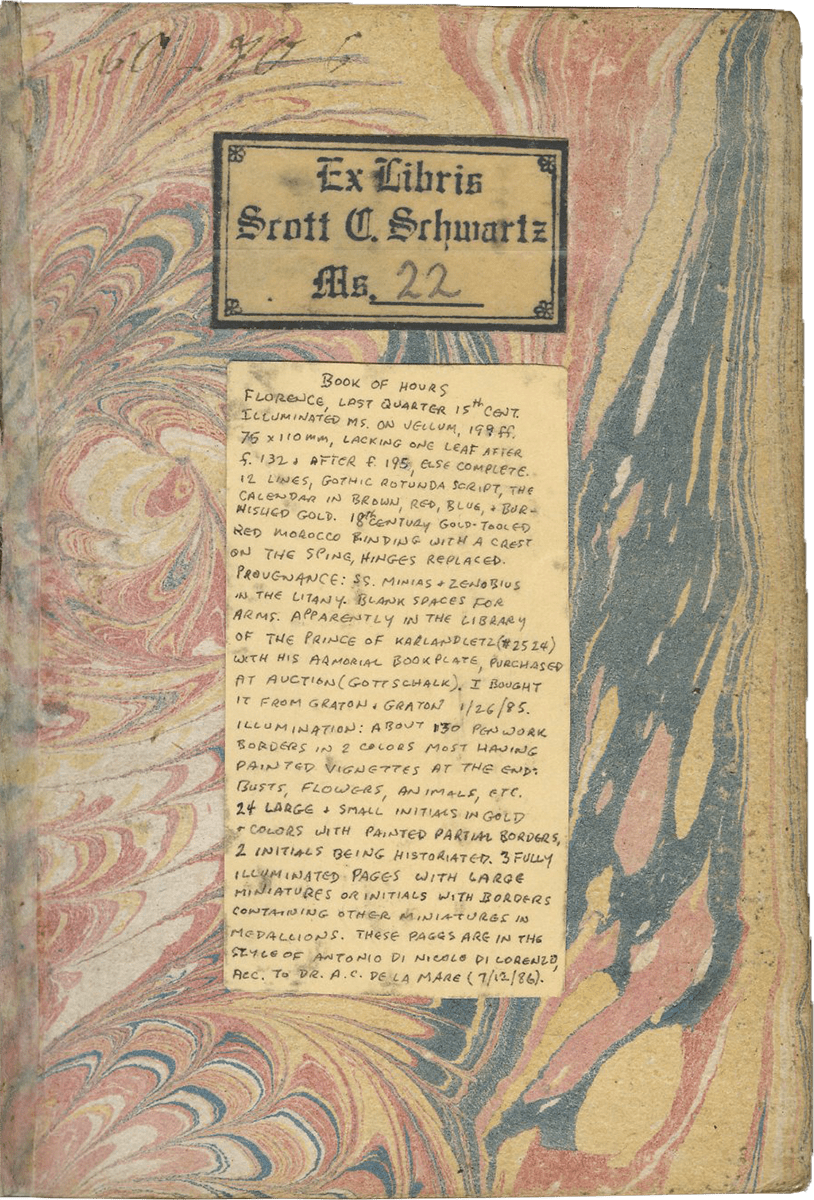

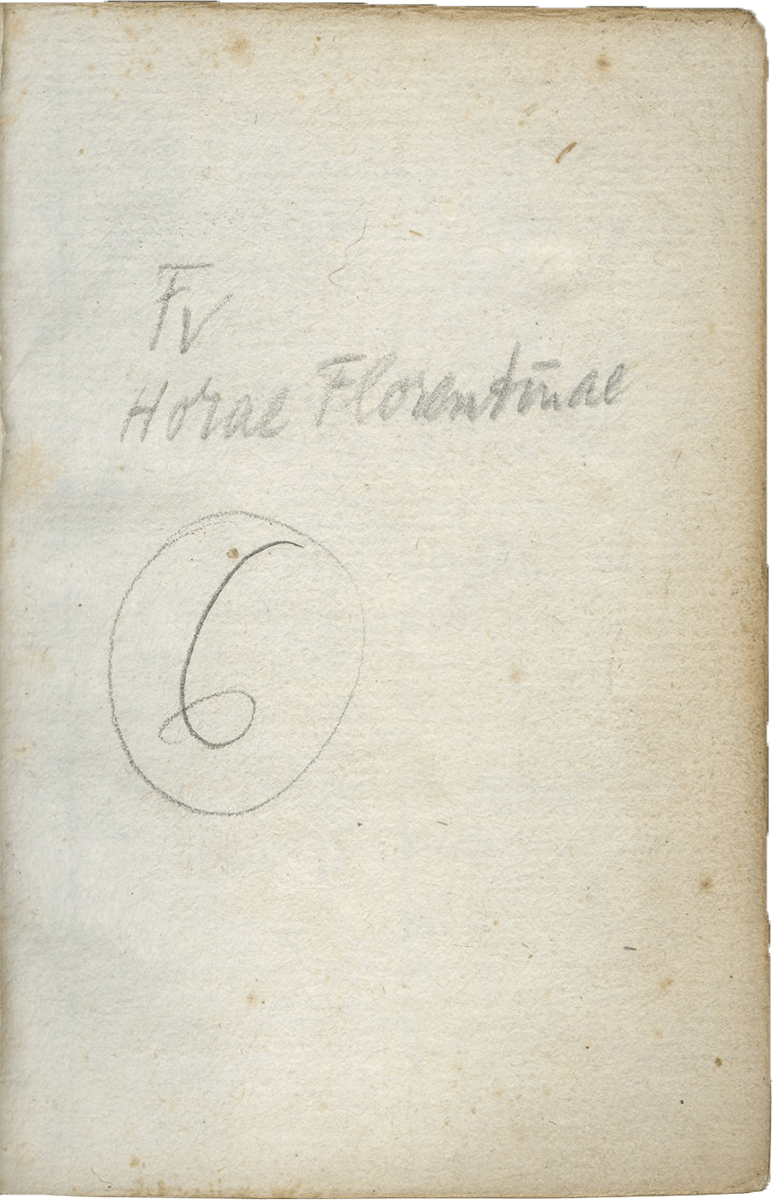

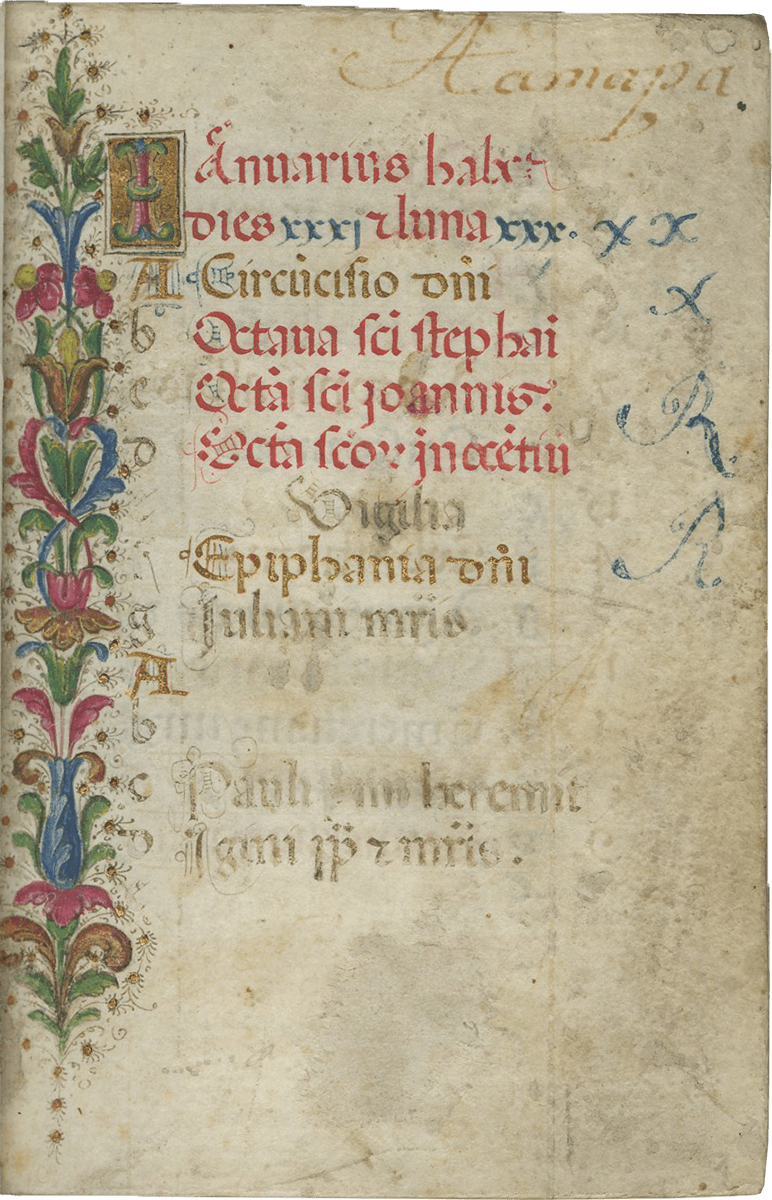
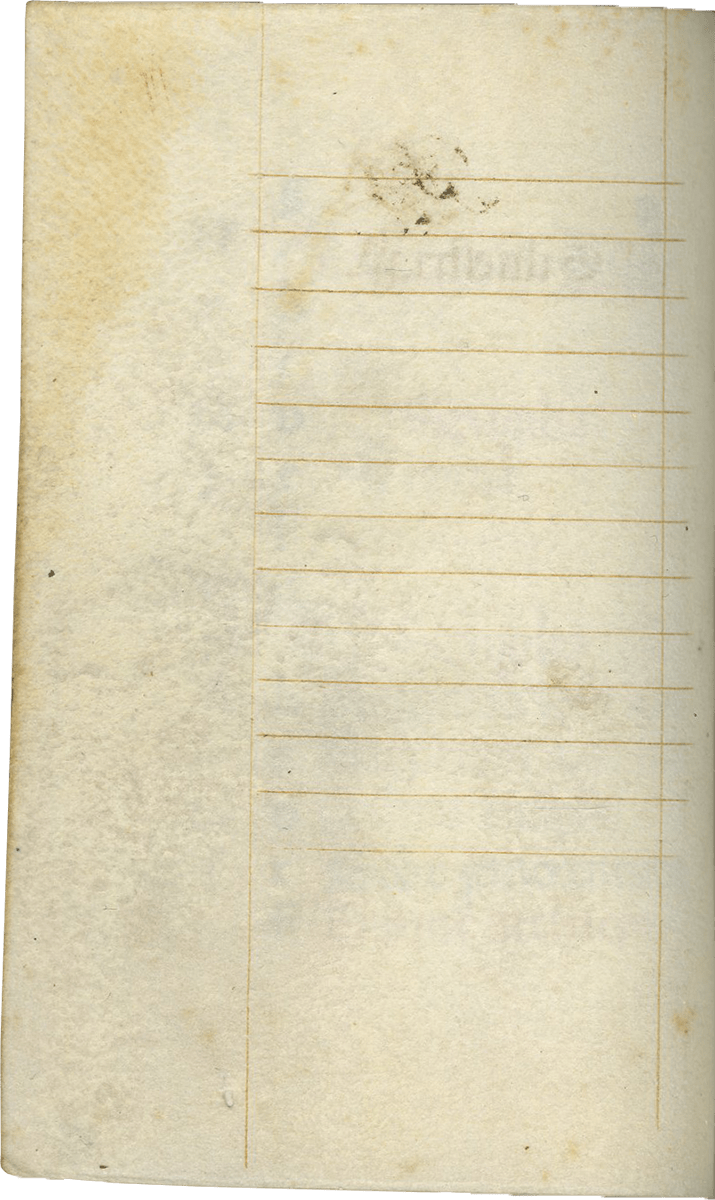

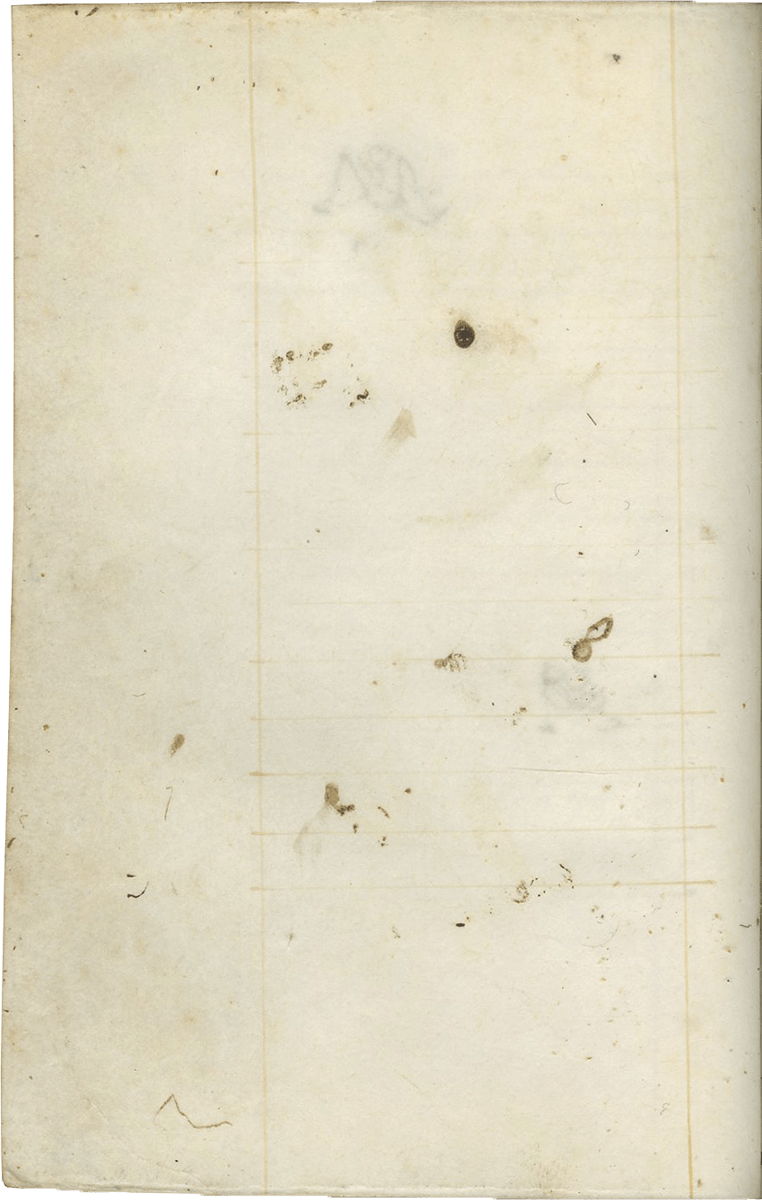
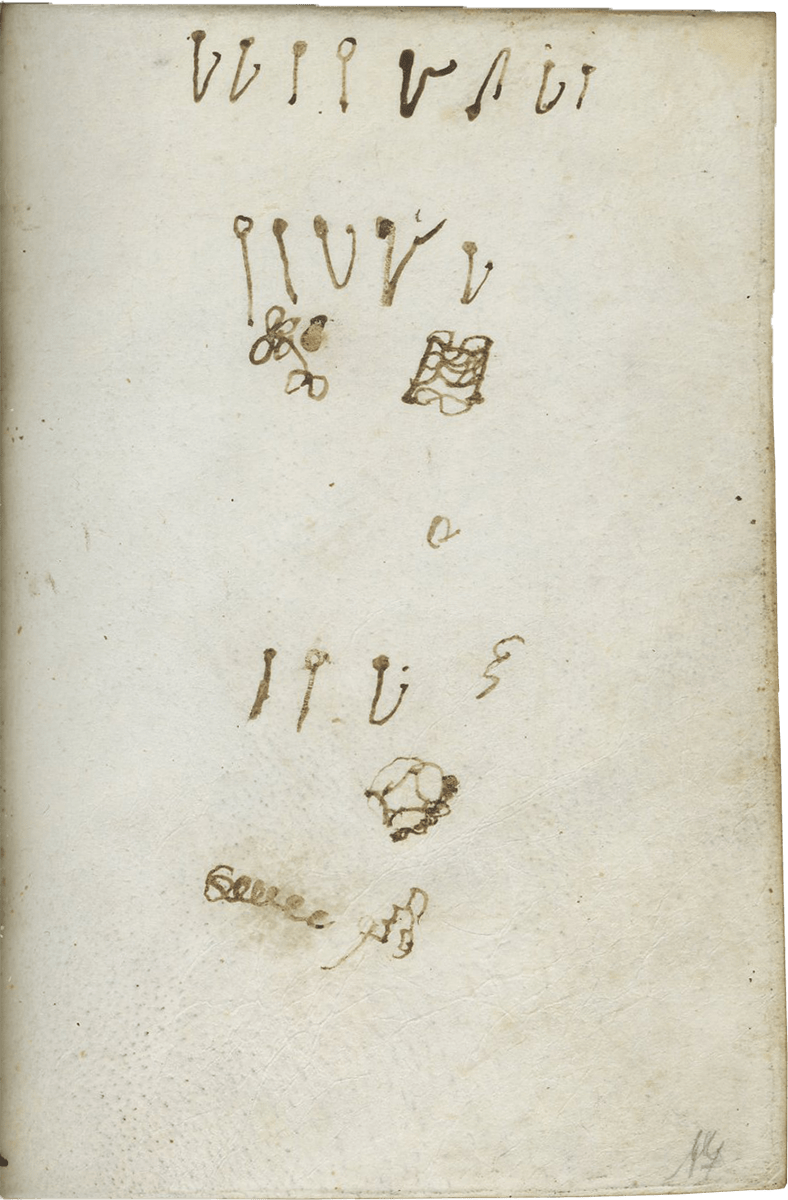

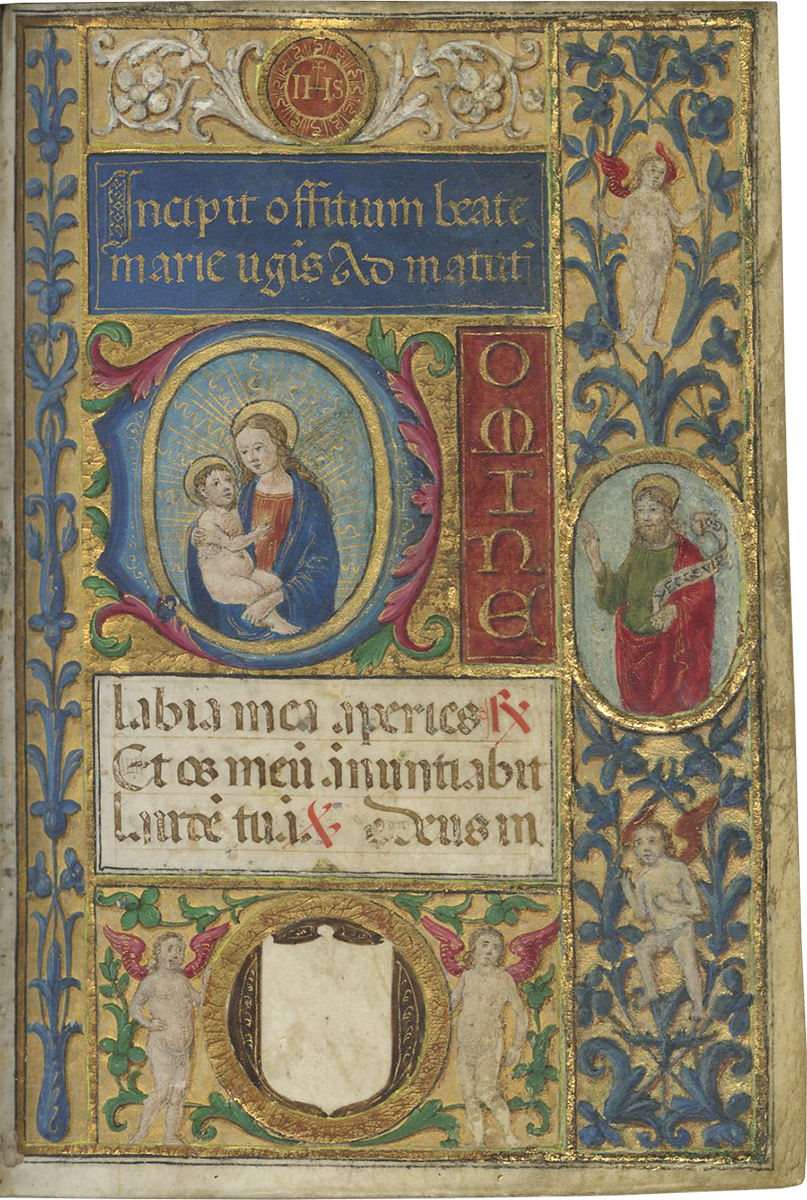
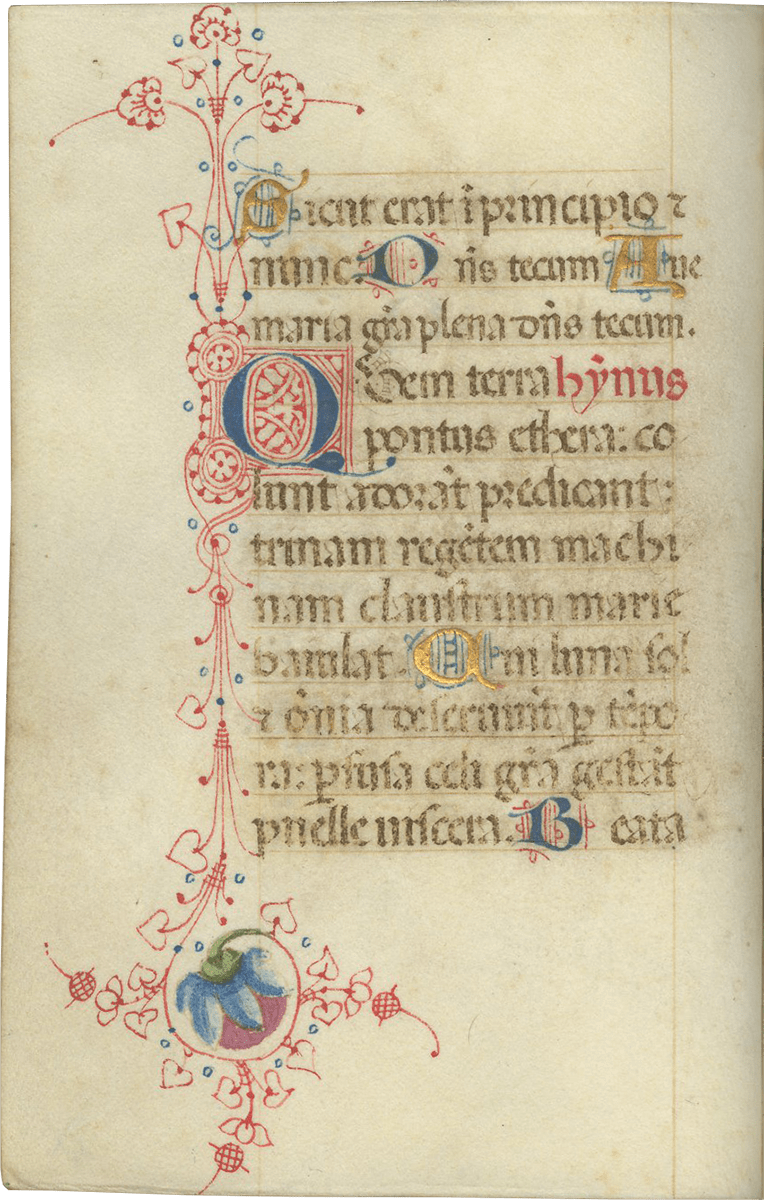

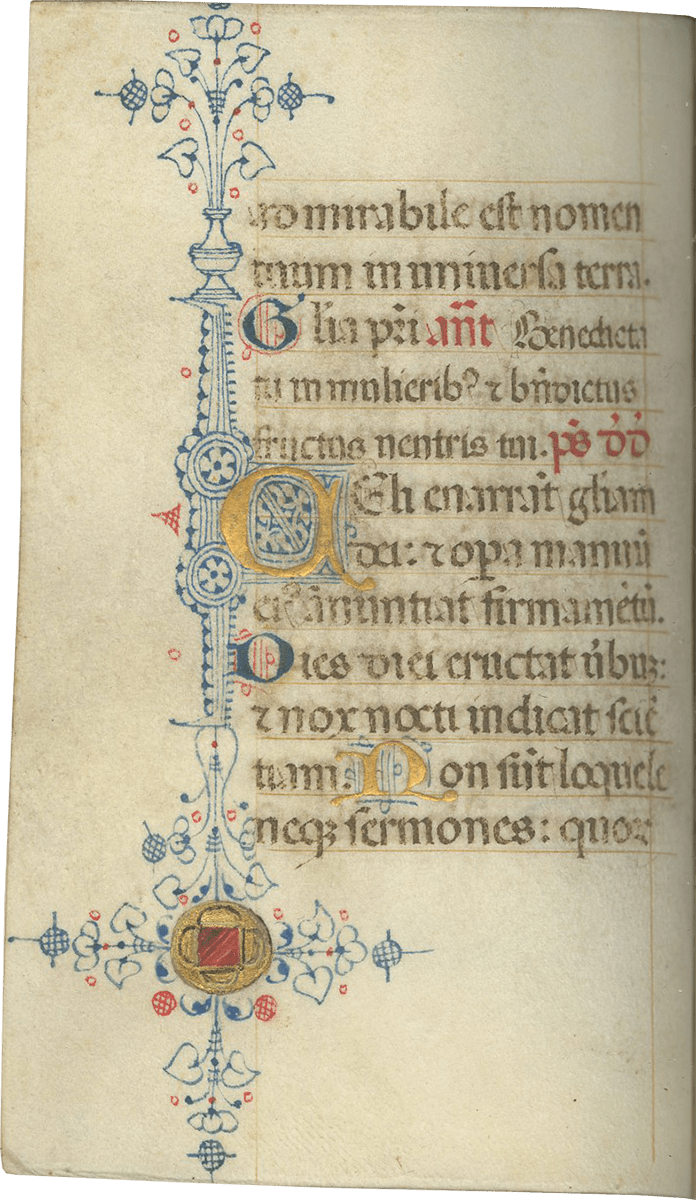
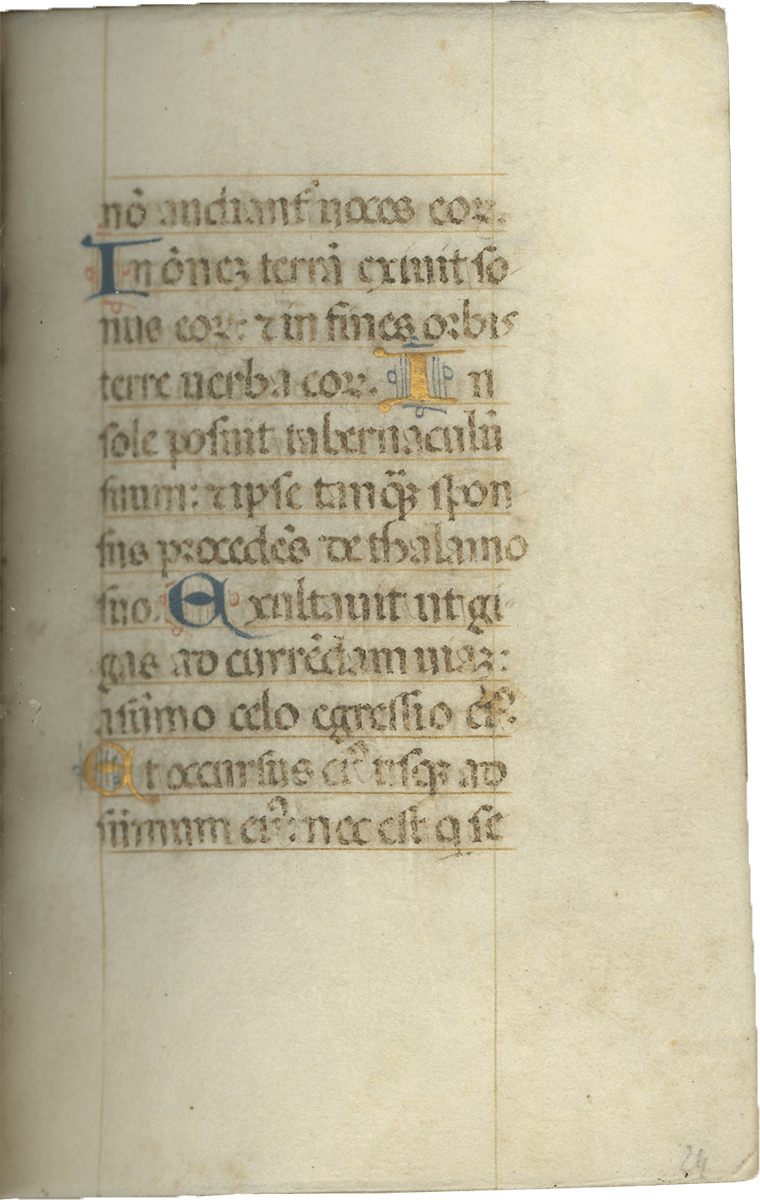
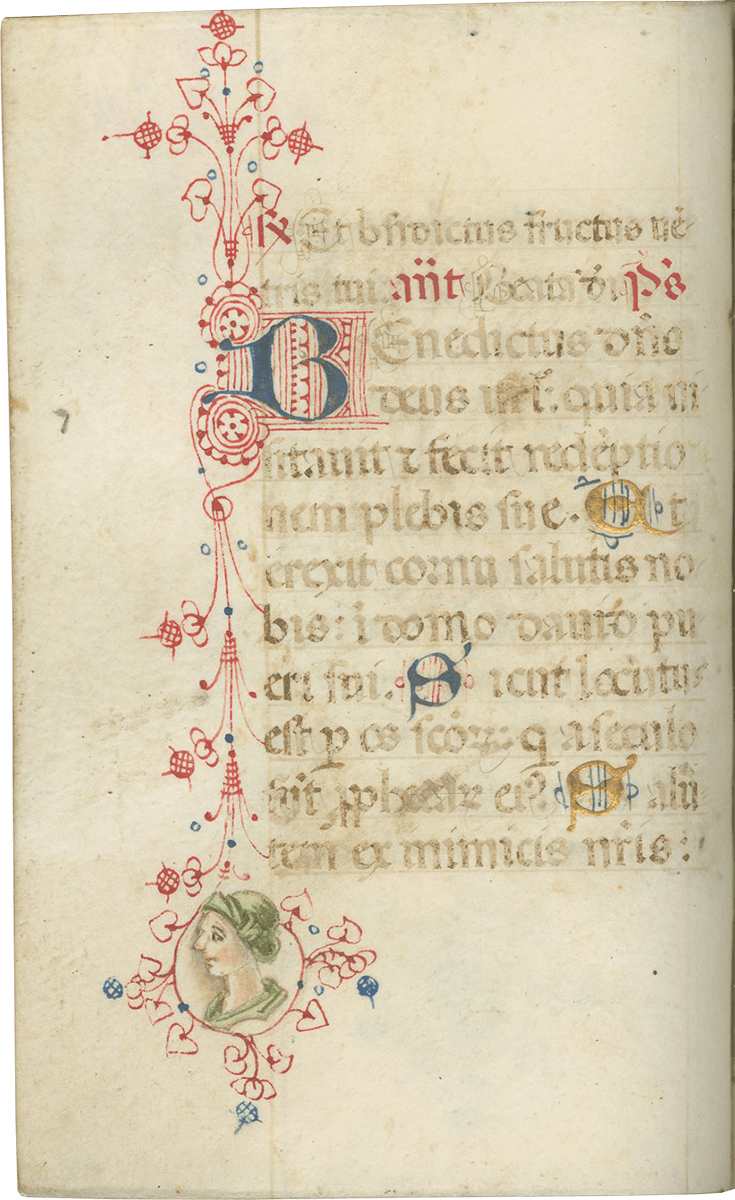
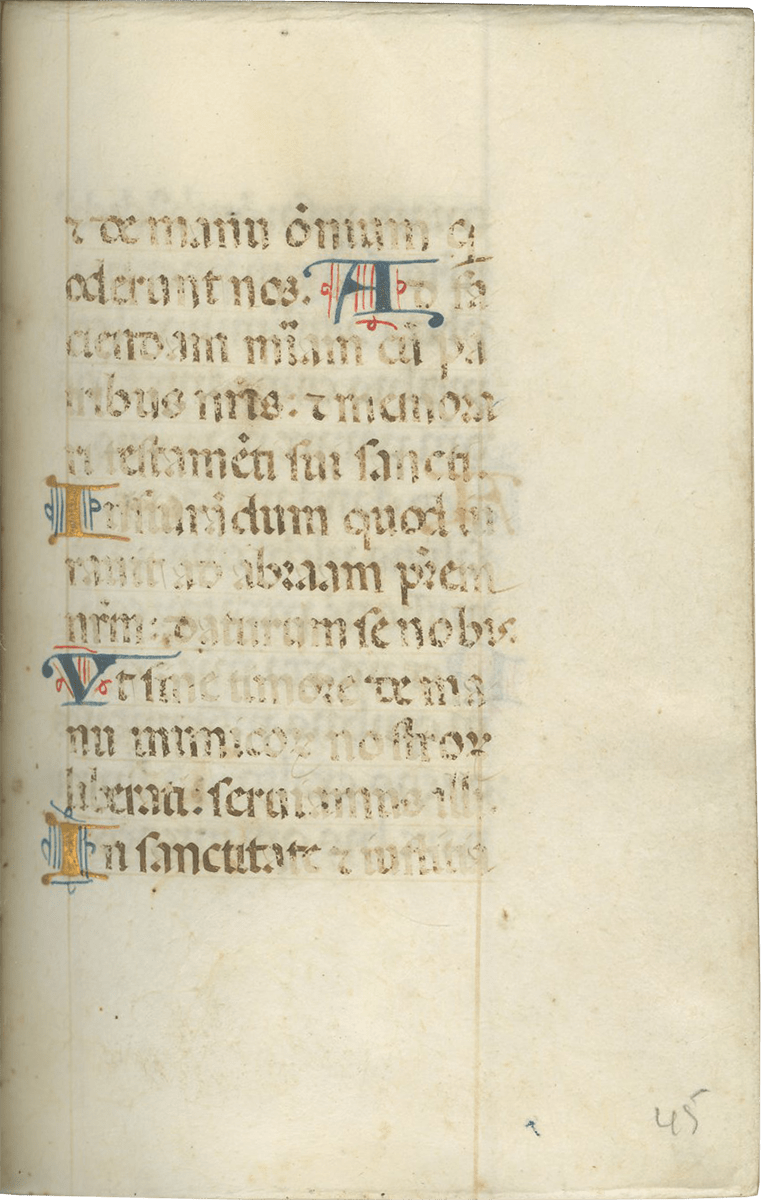

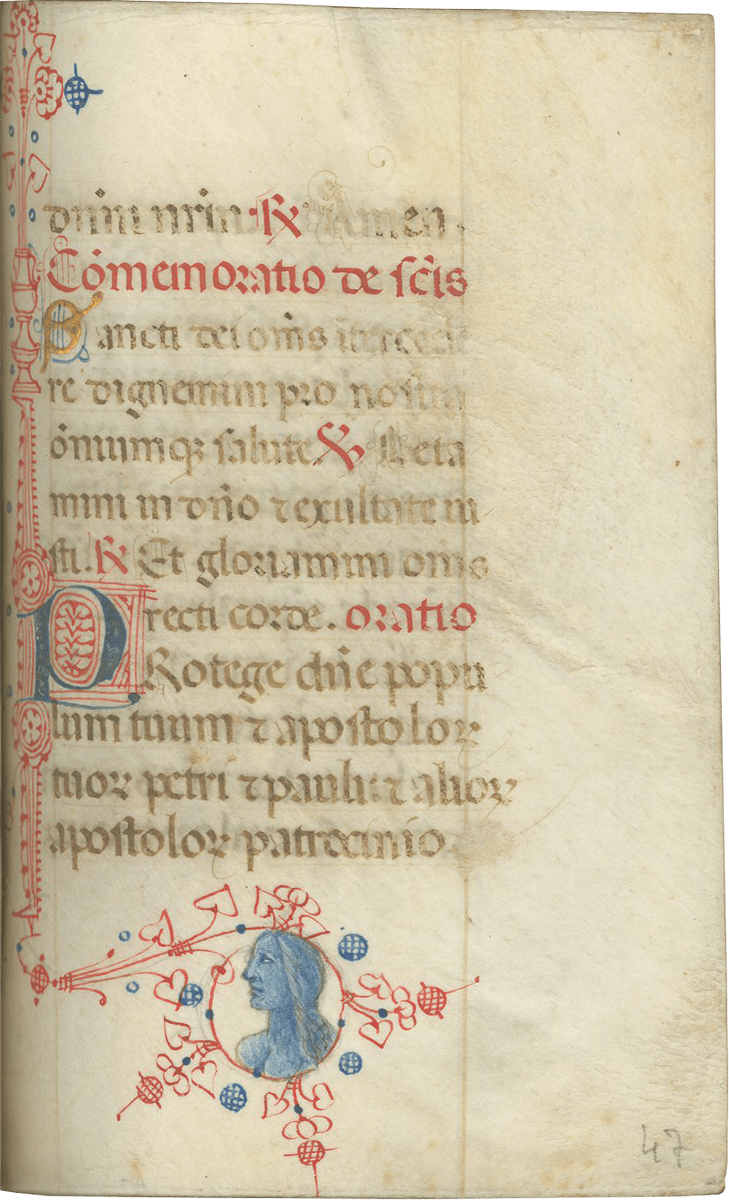
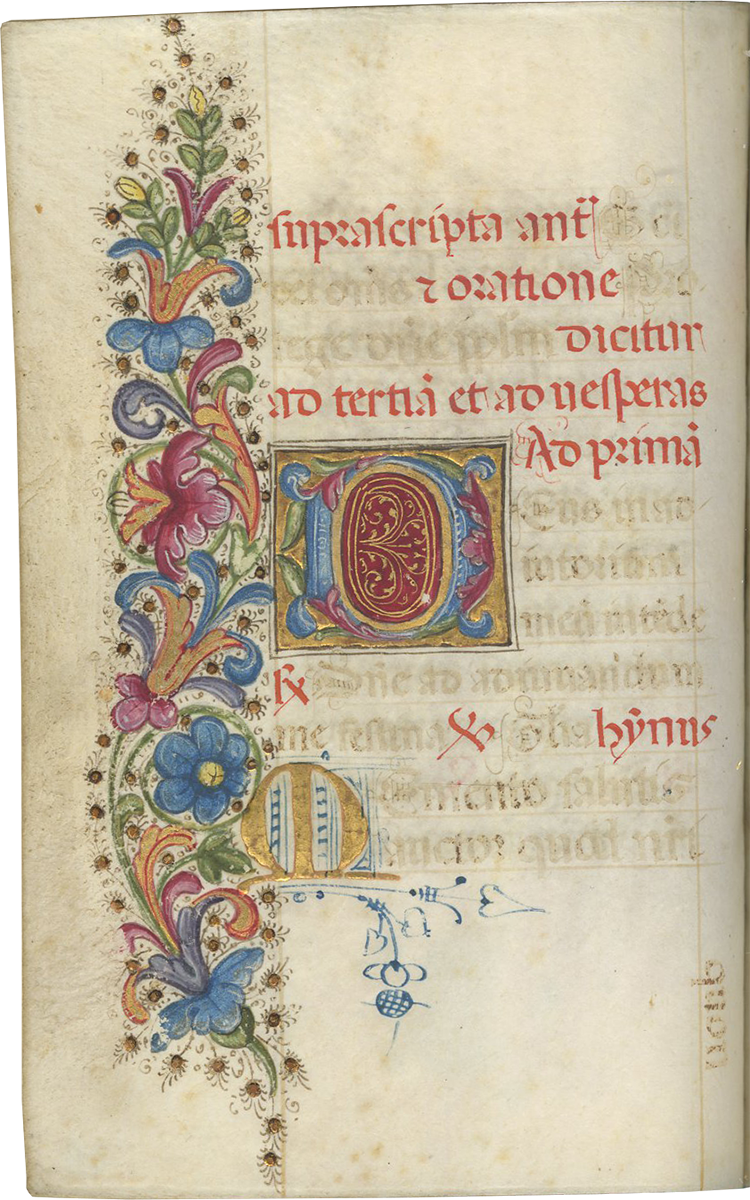


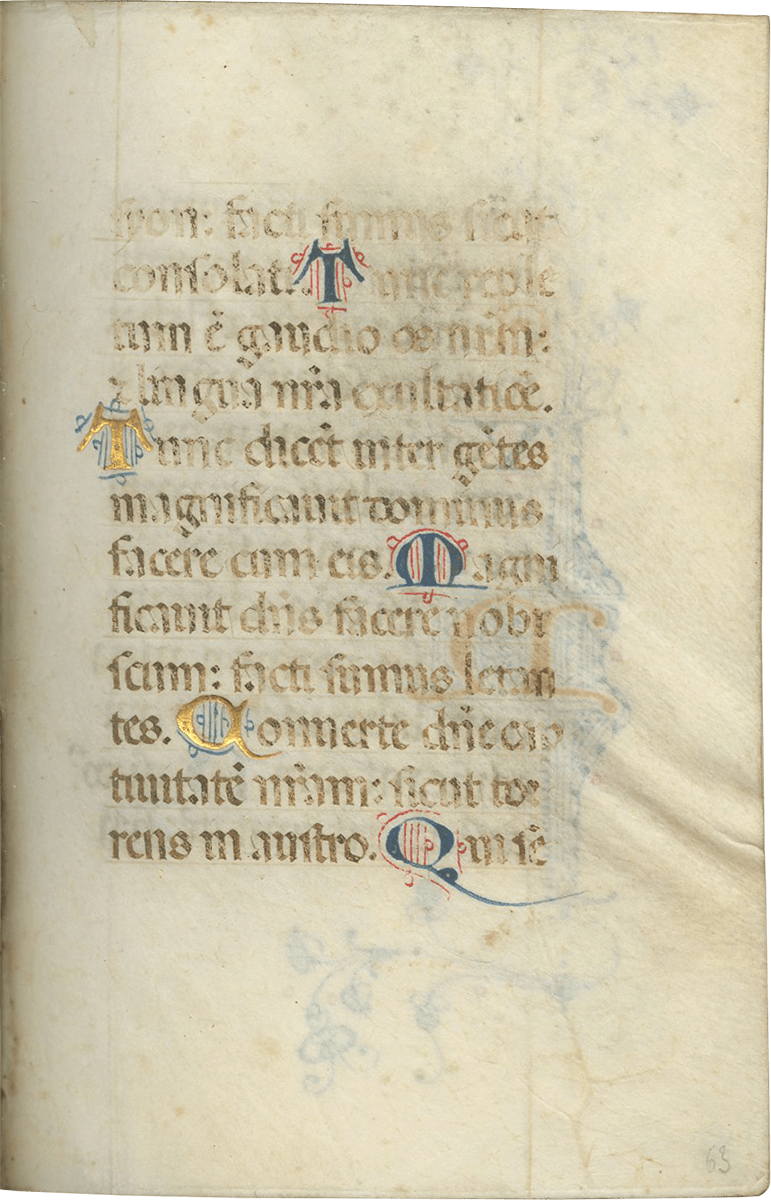
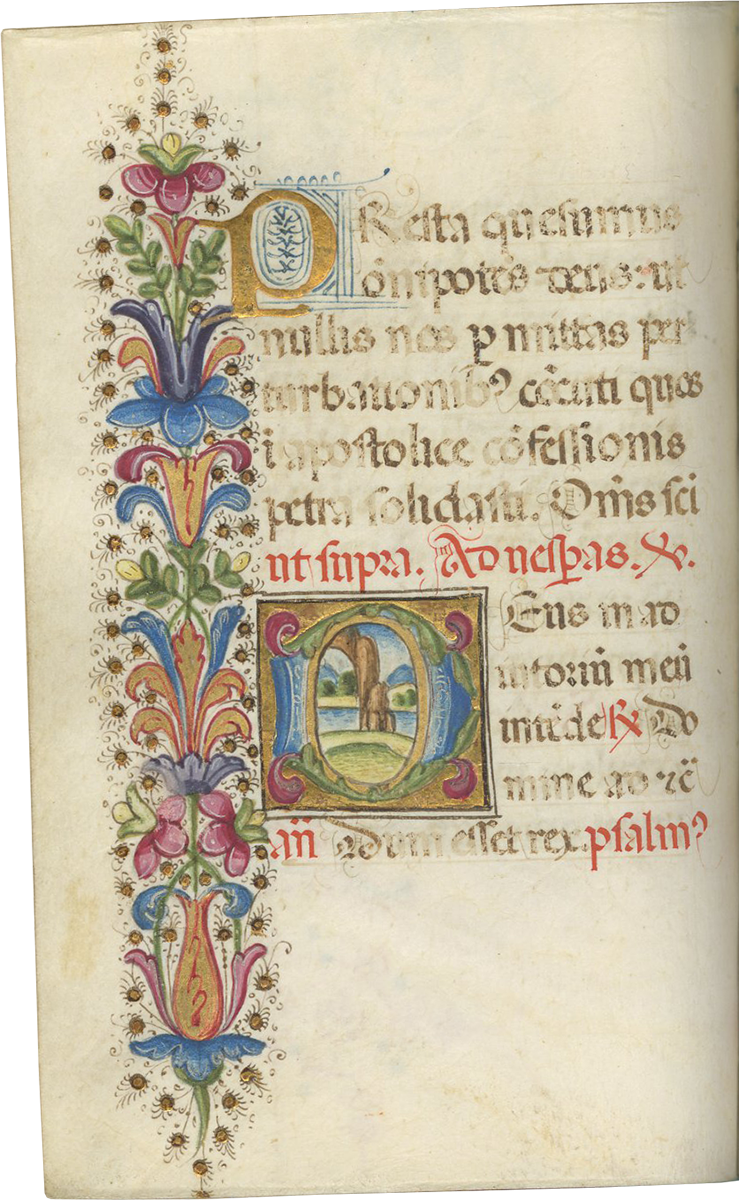
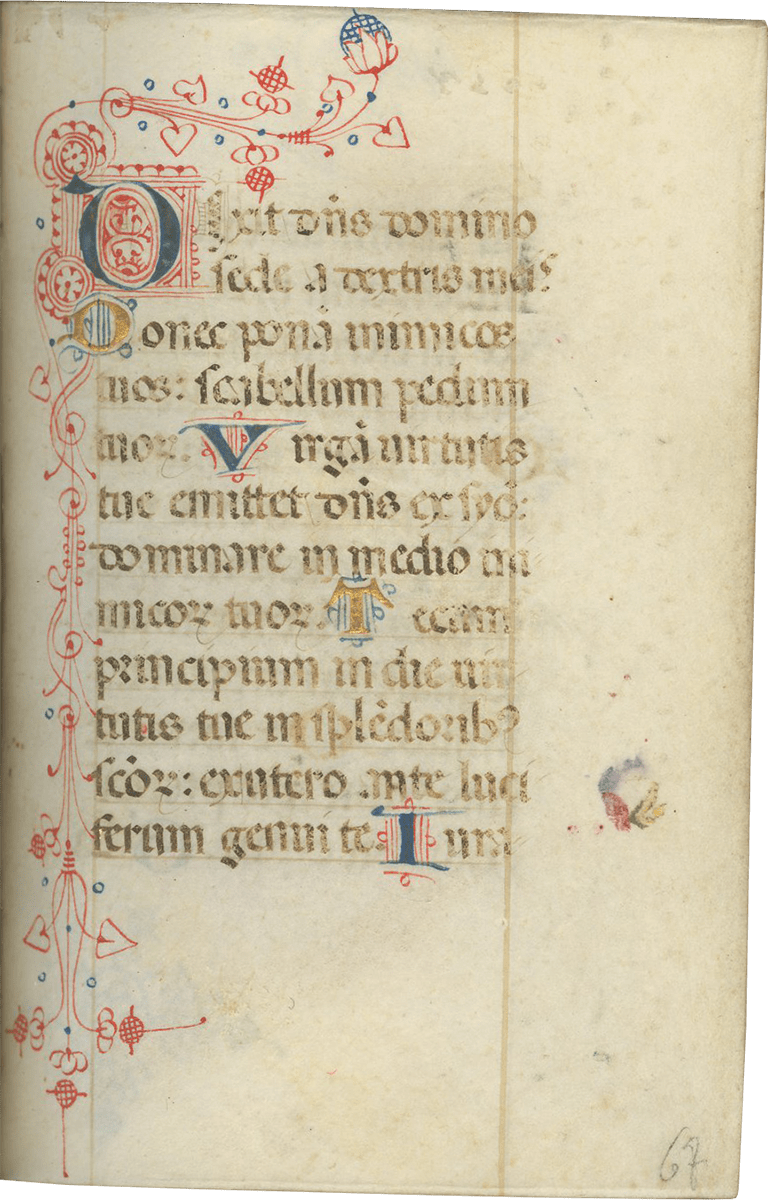
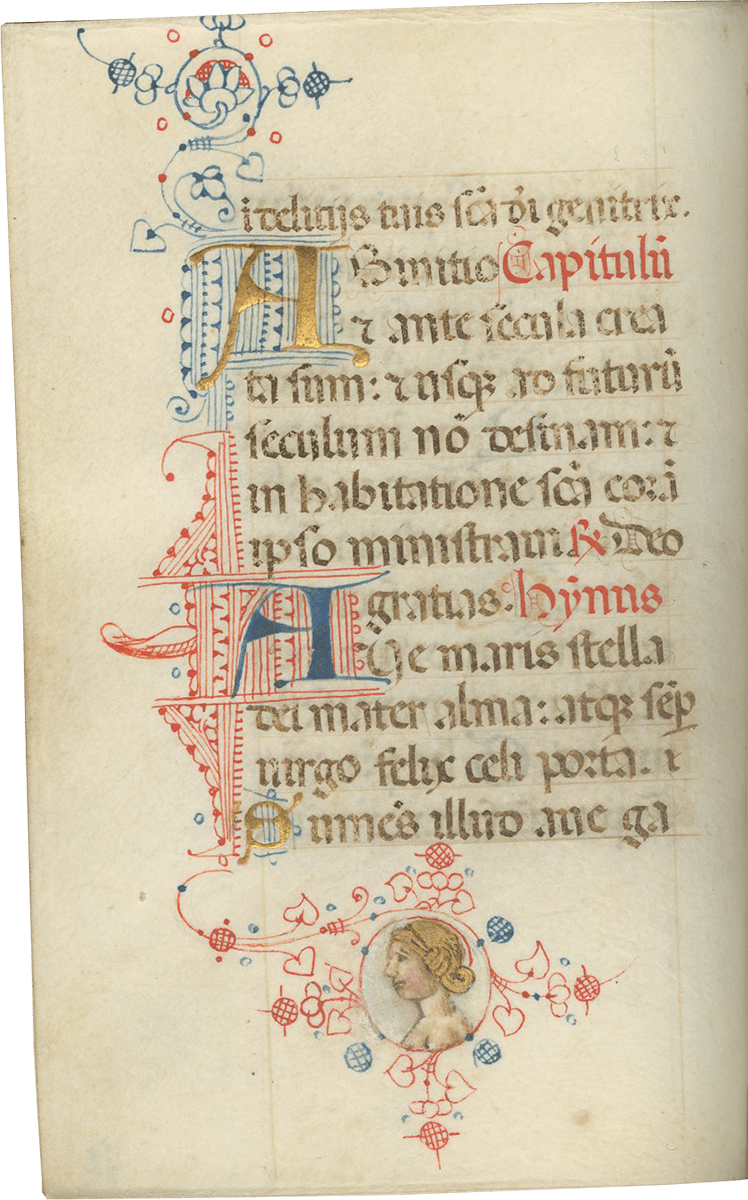
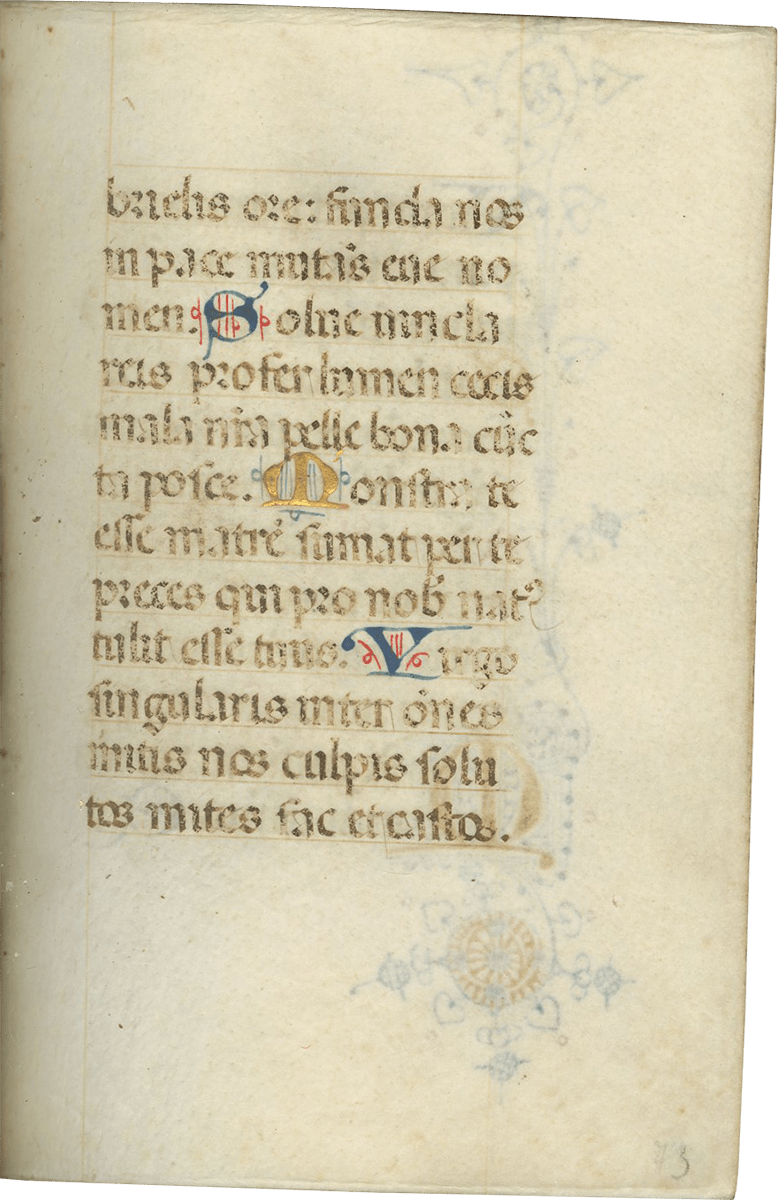
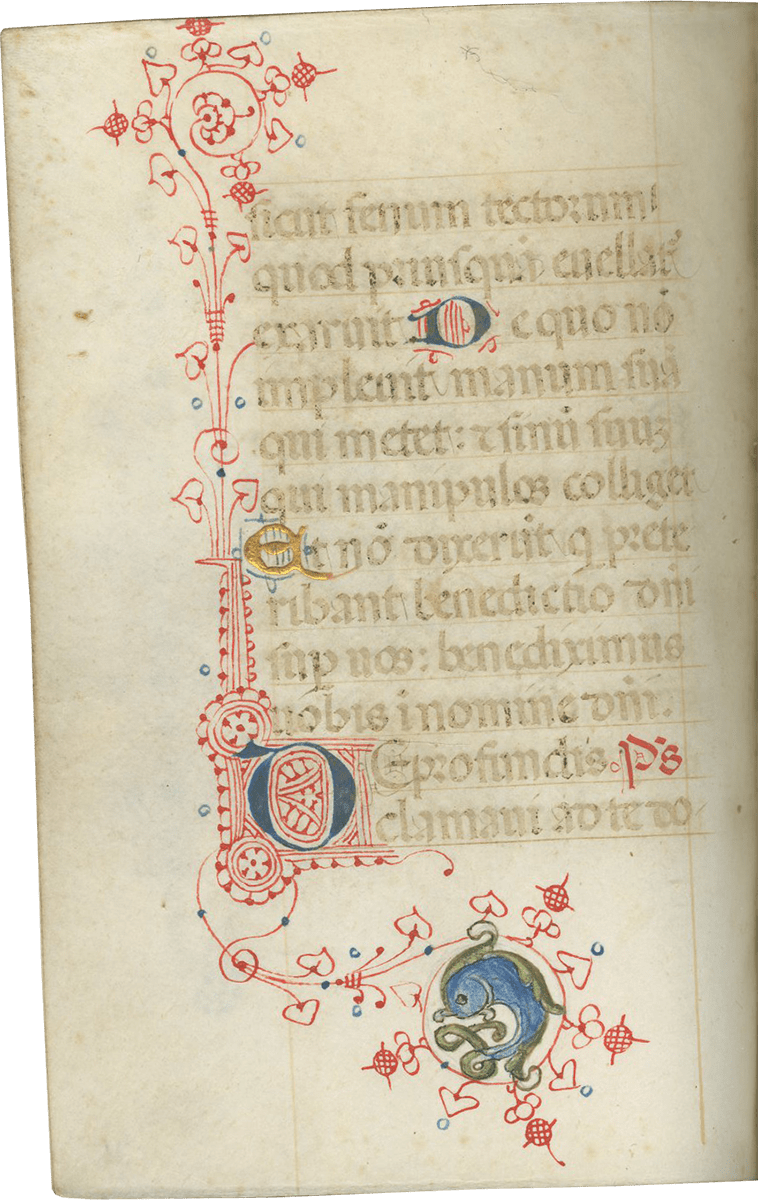

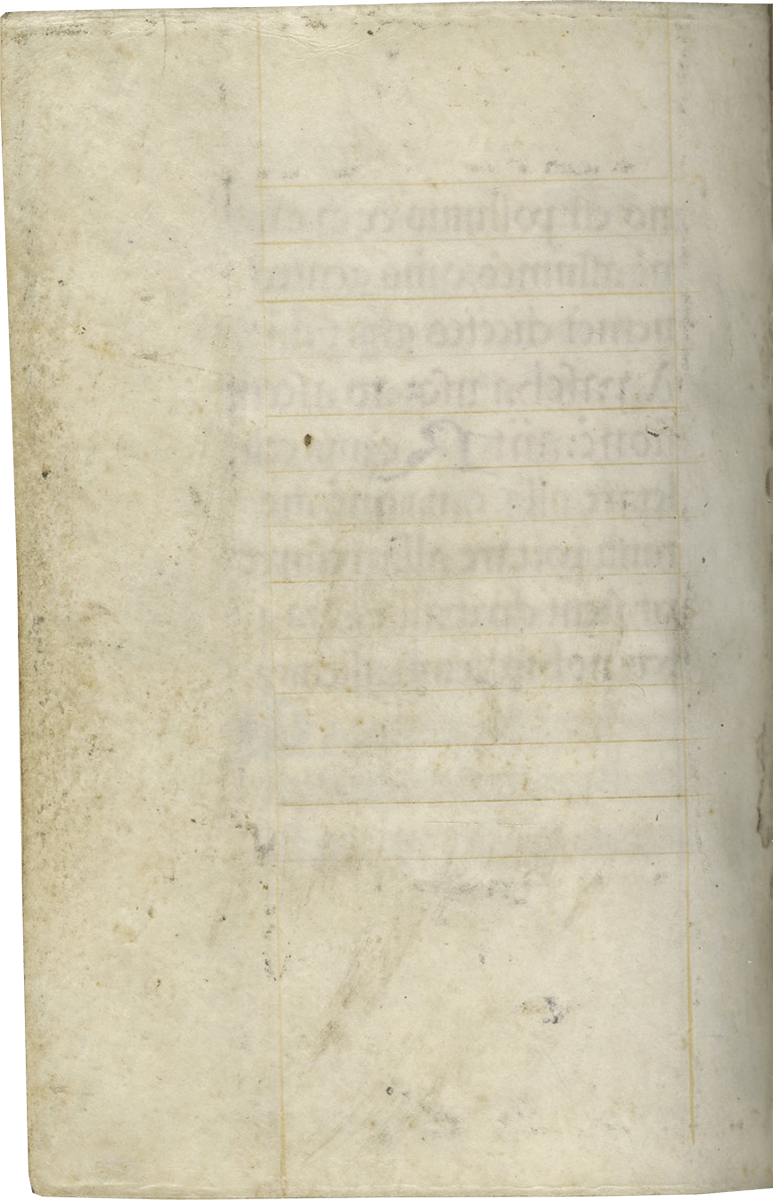
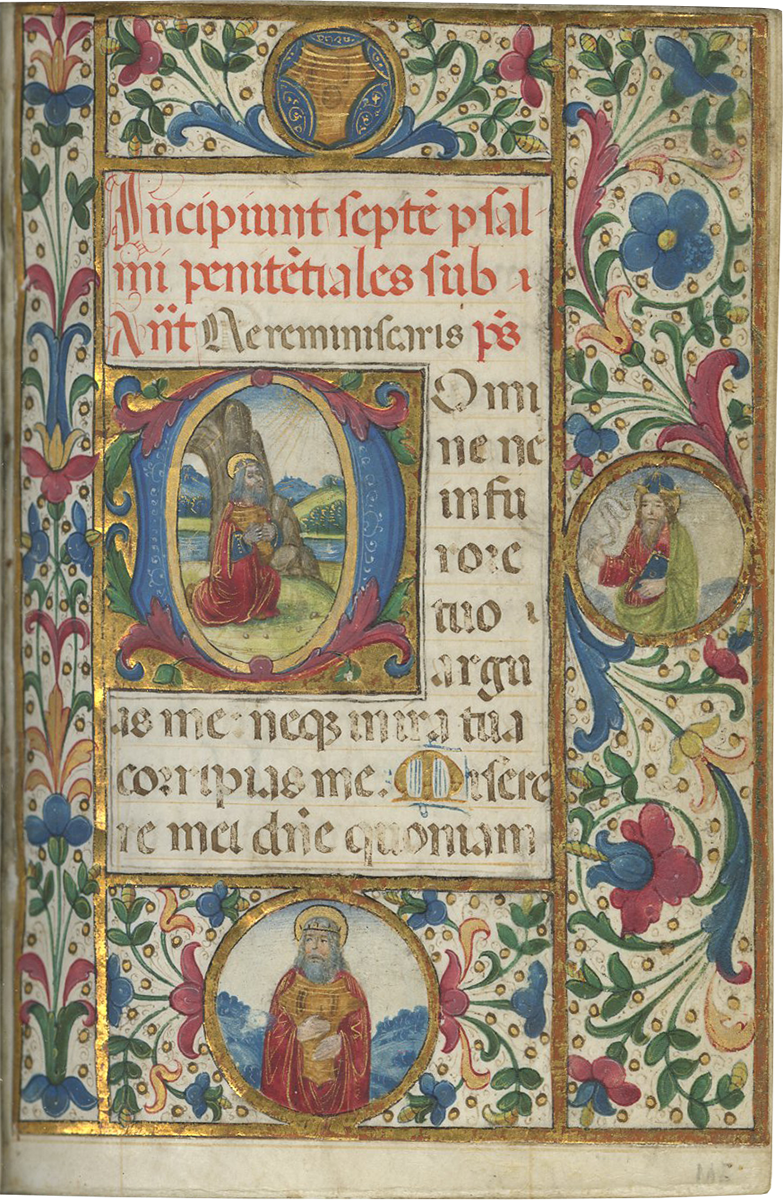
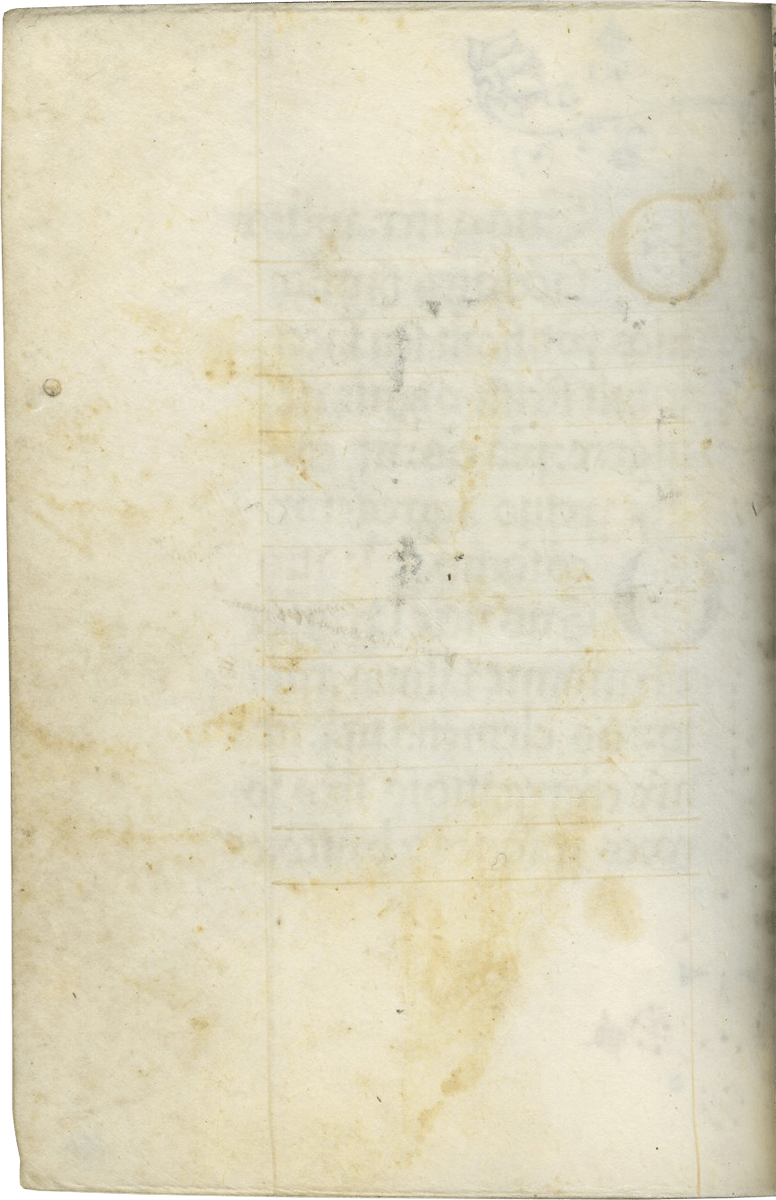

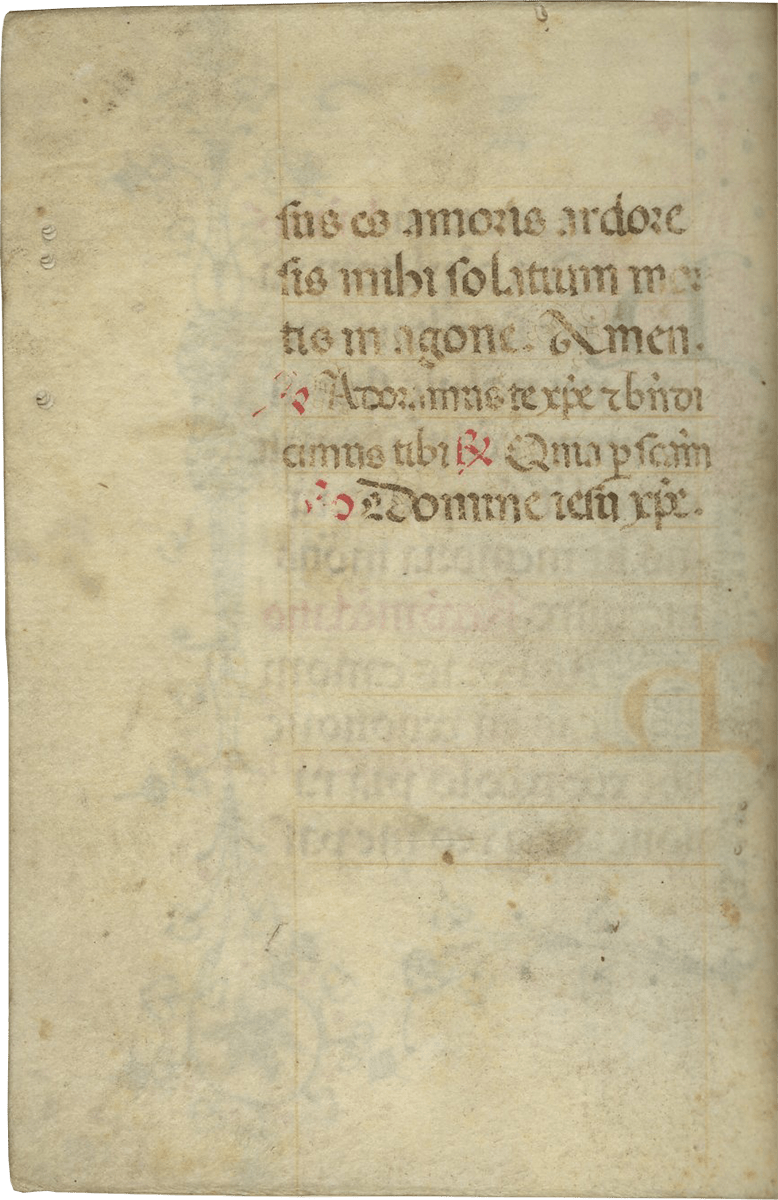
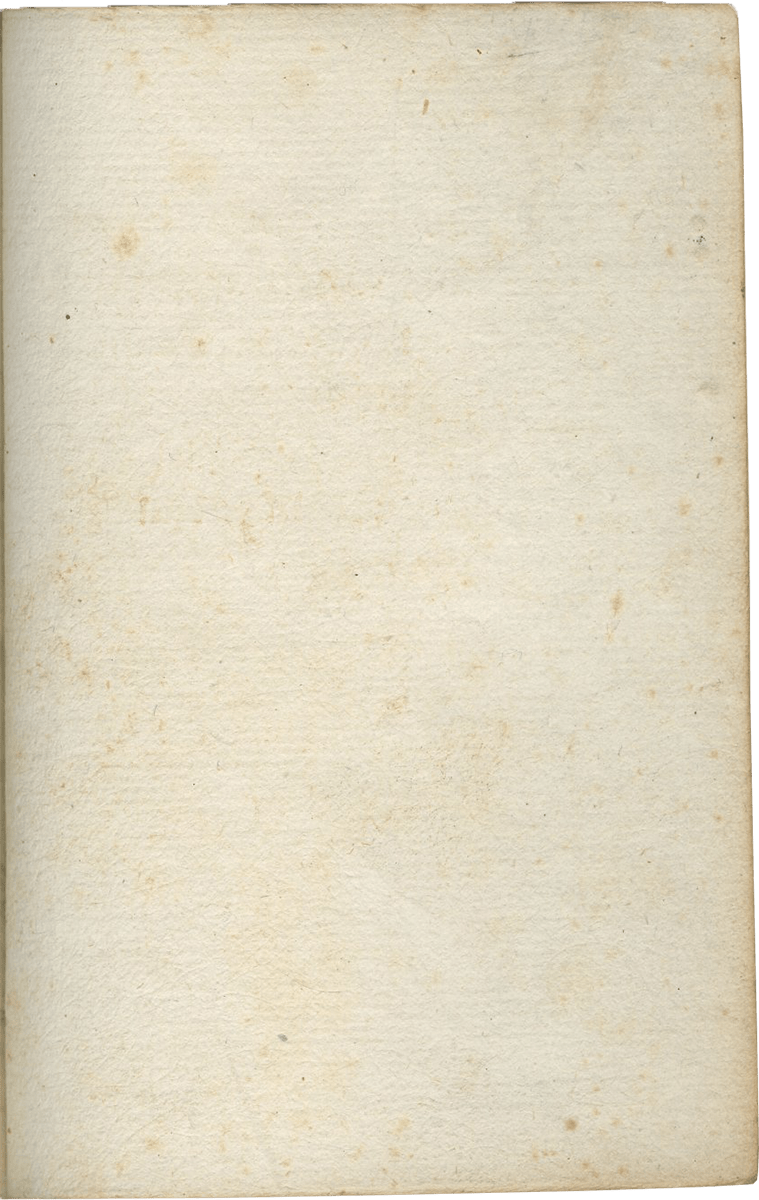
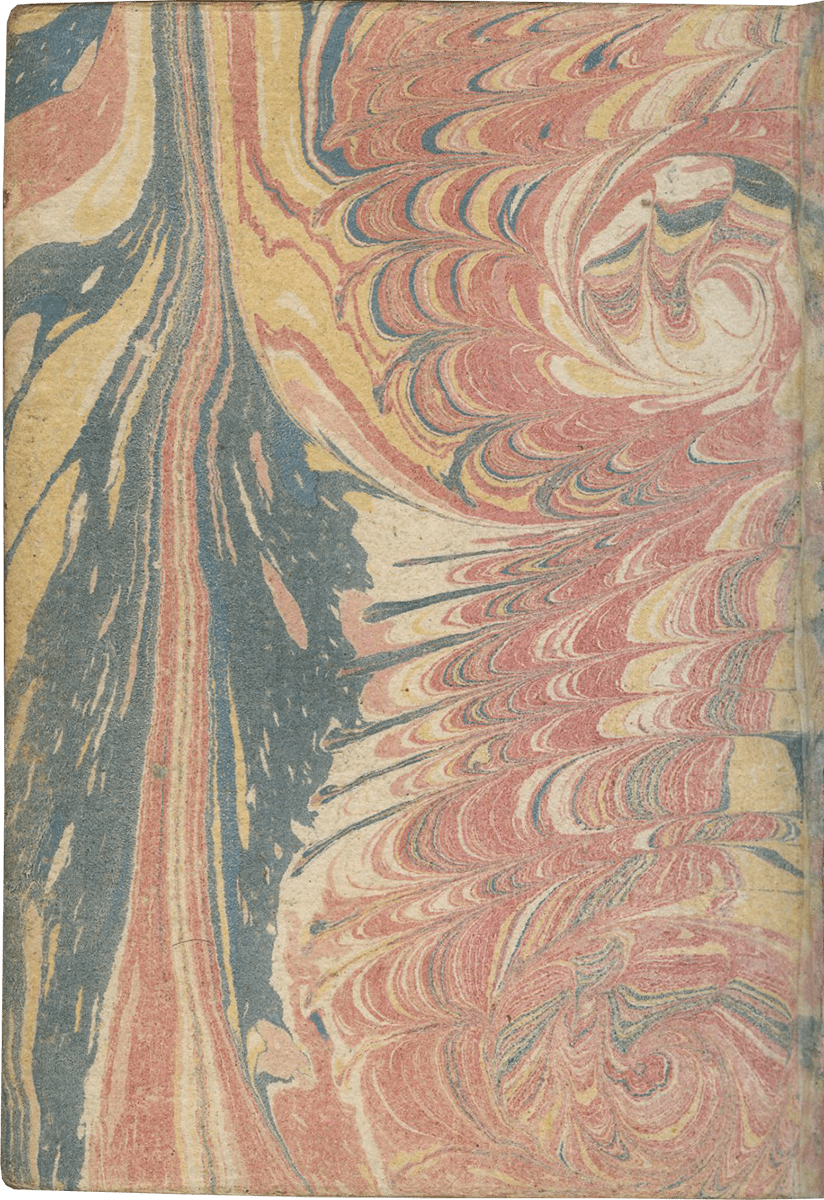


Description
Lovely Renaissance manuscript in the refined Florentine style of Attavante degli Attavanti with luminous double-page openings for the major sections. Once owned by the Carafa family of Naples, an important aristocratic family dating back to the twelfth century, the small-format manuscript is typical of manuscripts produced in the Attavante workshop and may even be from the workshop itself. Finely executed, striking penwork on most text pages includes filigree decoration that terminates in small watercolor drawings – wild men, fish, women’s heads, and grotesques of various sorts.
ii (paper) + 199 parchment + ii (paper), foliated in a nineteenth-century hand 1–199 in lower left margins, lacking one leaf after f. 132, else complete [collation: i10, ii8, iii10, iv10, v10, vi10, vii10, viii10, ix10, x10, xi4, xii10, xiii10, xiv10, xv10-1, xvi10, xvii10, xviii10, xix10, xx10, xxi8]; ruled in brown ink in a single column of twelve lines (justification: 41 × 63 mm); written in gothic rotunda minuscule; rubrics in red; versal initials alternately in dark blue and burnished gold; the calendar in brown, red, blue, and burnished gold; two-line initials alternately in blue and burnished gold throughout, with extensive pen decorations to margins terminating in vines and floral patterns, often embellished with animals, figures, and drolleries; TWENTY-FOUR ILLUMINATED INITIALS on gold ground with partial painted borders; THREE HISTORIATED INITIALS on gold ground with full or partial borders; ONE FULL-PAGE ILLUMINATION forming mise-en-page with full borders featuring acanthus, putti, sacred monograms, and saints in medallions; minor cockling to leaves and rubbing to text throughout, otherwise in good condition. Eighteenth-century gold-tooled red morocco binding with monogram and title “OFFICIA COD. MEMBR, SEC.” on the backstrip, hinges replaced, marbled paper pastedowns. Dimensions 76 × 110 mm.
PROVENANCE
1. Created in Florence, with its patron saints Minias and Zenobius included in the litanies; commissioner unknown with cartouches ff. 18v–19r left blank.
2. Vincenzo Maria Carlo Carafa della Stadera (1734–1765), Duke of Maddaloni, of the important Carafa family of Naples; his bookplate on front pastedown.
3. An inscription at the top of the front pastedown reads “Herzog von Kurland [...].”
4. Previously sold by the German bookseller Paul Gottschalk (1880–1969), with inventory no. 2524 and brief catalog description penciled on the verso of the first flyleaf. Gottschalk operated his business in The Hague during the years of WWII, from 1940 until he moved permanently to the United States in 1945.
5. Graton & Graton, book dealers, Chicago, January 26, 1985.
6. Dr. Scott Schwarz, New York; his bookplate with inventory number “MS 22” on the recto of the first flyleaf.
TEXT
ff. 1r–15r, Calendar with major feasts in gold;
ff. 15v–18r, blank with pen tests;
ff. 19r–102v, Hours of the Virgin (Use of Rome), with Matins (f. 19), Lauds (f. 33), Prime (f. 48v), Terce (f. 54v), Sext (f. 58v), None (f. 62v), Vespers (f. 66v), and Compline (f. 75v), followed by seasonal variants;
ff. 103–119, Penitential Psalms and litanies followed by related prayers (ff. 119–132);
ff. 133r–191r, Office of the Dead (beginning imperfectly);
ff. 192–199v, Hours of the Holy Spirit.
ILLUMINATION
The subjects of the full-page miniature and historiated initials are:
ff. 17v–18, Annunciation and Virgin and Child with Saints (double-page opening for Hours of the Virgin);
f. 103, King David (for the Penitential Psalms);
f. 192, Dove of the Holy Spirit (for the Hours of the Holy Spirit).
Named for its important eighteenth-century ducal owner (but distinguished from the Hours of Cardinal Carafa, now Biblioteca Apostolica Vaticana, MS Vat. lat. 9490), the Carafa Hours was painted in Florence by an artist close to Attavante degli Attavanti and quite possibly within his own celebrated workshop, active at its peak in the final decade of the fifteenth century. Characteristic of Attavante’s finest productions, the present Hours feature full, richly decorated borders introducing each major sequence of prayer – such as the Hours of the Virgin – with a full-page miniature paired with an historiated initial (Alexander 2016, 153–54; Garzelli 1985, 1:241). The vibrant borders are executed in vermilion, emerald, and azure, overlaid with gold acanthus tendrils, cartouches, putti, and portrait medallions of saints and prophets. Major prayers open with luminous double-page spreads, creating striking, jewel-like compositions. Closely comparable features appear in other Books of Hours from Attavante’s workshop, including manuscripts at Dartmouth Library Special Collections (MS 1054), Museum Angewandte Kunst, Frankfurt am Main (L.M.51), the Morgan Library and Museum (MS M.14), Oxford (Keble College, MS 60), Stockholm Nationalmuseum (MS B 1960), and others in distinguished private collections.
Attavante degli Attavanti (1452–1520/25) was an acclaimed Florentine illuminator, best known for his luxurious Missals and Breviaries painted for patricians and royalty. Relatively early in his career, in 1473, Attavante collaborated with Domenico Ghirlandaio on a Choir Book, the miniatures of which are now preserved in the Vatican Library (BAV, Cod. Ross. 1192). By the late 1470s, Attavante had established himself as a leading miniaturist and received notable commissions from important clients, including a Missal made for Bishop Thomas James in 1483 (Lyon, Bibliothèque municipale, MS 5123), a Breviary for Matthias I of Hungary created 1487–1492 (BAV, Urb. Ms. Lat. 112), and a Book of Hours produced for Laudomia de’ Medici in 1500–1510 (London, British Library, Yates Thompson MS 30). He circulated among some of the leading artists of the Renaissance and maintained a friendship with Leonardo da Vinci, as documented by surviving correspondences. Some twenty-five years after his death, Attavante was remembered by Giorgio Vasari as “the most celebrated and famous of miniaturists.”
LITERATURE
Unpublished; for Related literature:
Alexander, J.G. The Painted Book in Renaissance Italy, 1450–1600, New Haven, 2016.
Bellosi, Luciano. “Attavante e i miniatori fiorentini del primo Rinascimento,” Prospettiva 37 (1984), pp. 2–23;
Dondi, Christina. “Attavante degli Attavanti e il suo ruolo nella miniatura fiorentina della fine del Quattrocento,” Arte Cristiana 90 (2002), pp. 147–164;
Freuler, Gaudenz. “Attavante, il maestro dell’Offiziolo Hamilton e i miniatori fiorentini nella cerchia di Lorenzo de’ Medici,” in Miniatura del Quattrocento in Italia, ed. Anna Melograni, Rome, 1995, pp. 123–45;
Garzelli, Annarosa. Miniatura Fiorentina del Rinascimento, 1440–1525, 2 vols, Florence, 1985;
Alexander, Jonathan J. G. The Painted Page: Italian Renaissance Book Illumination, 1450–1550, London, 1994;
Santi, Francesco. “Il Maestro delle Meditazioni di San Bernardo e il giovane Attavante,” Arte Cristiana 85 (1997), pp. 275–88;
ONLINE RESOURCES
Italian Books of Hours/Libri d'ore italiani, by Francesca Manzari with Lola Massolo
https://sites.google.com/view/libridoreitalianimanzari/home-page
We thank Peter Bovenmyer and Francesca Manzari for assistance on this description.